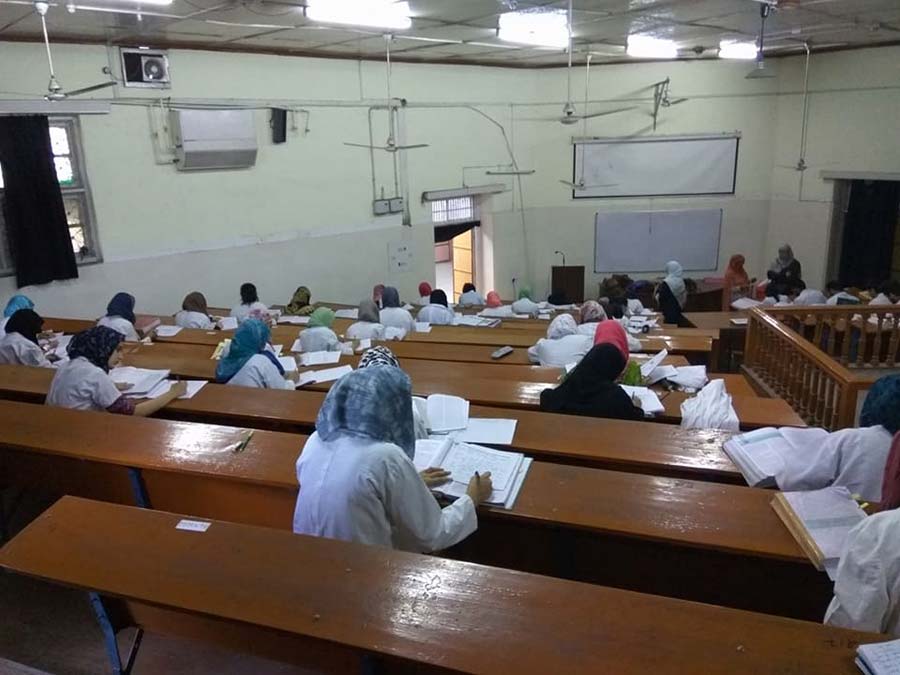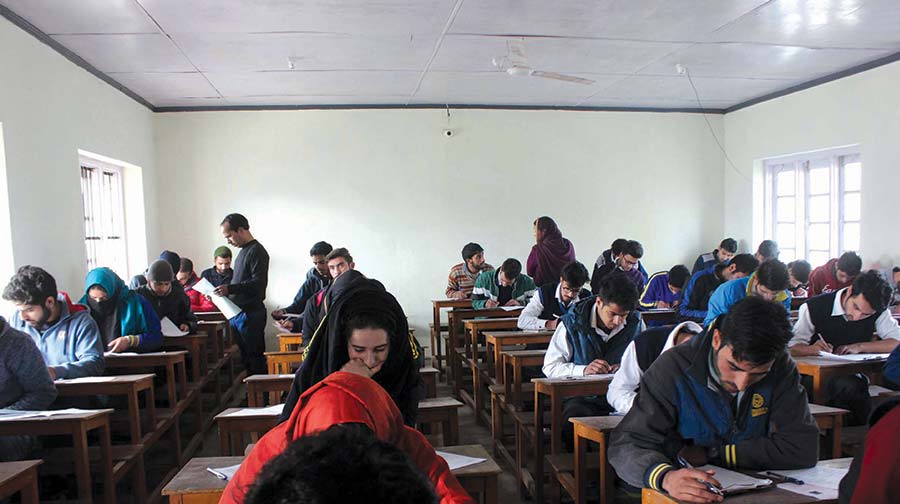Unlike 2016, the educational campuses across most of Kashmir had interrupted schedule because the doors would shut more frequently than ever. Muhammad Younis explains the phenomenon, its consequences and a possible way out

The January 2016 row over martyrs’ memorial in Pulwama paralysed the normal living for weeks. This led Aamir Amin, a newly twelfth class pass from the town’s government higher secondary school to decide to get enrolled in any institution outside the district.
“I am a non-medical student,” Aamir said. “As Pulwama witnessed shutdowns and hartals more often, I didn’t want my studies to suffer, so I took the admission in a Bijbehara College.”
Although costs were huge and distance much more in comparison to his town’s college, Aamir ready to bear the odds, provided his studies were not compromised. But it was destiny that he had only a few months of study in Bijbehara College that Burhan Wani was killed in July. “The rich lot of the valley, the sons of bureaucrats, politicians, and others, go out of the state for studies, but people like me, who come from poor families (Aamir’s father is a manual labour), have to satiate that thirst in the valley itself,” Aamir regrets. “And when we are being denied the same, it is like keeping us starving.”
A little respite visited Aamir’s door, when separatists appealed teachers to start classes for the students in their catchment areas. “We would try to go on foot to the teachers who we thought knew even the basics about our subjects. It wasn’t sufficient in any way, but we had no alternatives.”
After a “barren” year, when the doors of the educational institutions finally opened again, another controversy surfaced in Pulwama, when on April 15, a police jeep, two armoured vehicles entered the campus and beat the students to pulp. It triggered another crisis that resulted in shutting doors of most of the educational institutions in Srinagar and south Kashmir.
Time and again, the process is still going on: a simple law and order situation asks for closure of educational institutions. By now, Aamir is struggling in the same first year he got enrolled in more than a year and a half ago.
Saima Rashid, 20, recalls when on August 9, she was waiting in the degree college of Tral, along with her classmates, for their undergrad exams of Urdu paper. All of a sudden, the slogans of freedom reverberated outside the premises, by which all came to know that a gunfight had started between militants and police in Gulab Bagh. The exams were slated at 2pm and the gunbattle started at quarter past one. Luckily because of some technical fault, the paper was cancelled.
Saima quickly came out of the college to board a vehicle to reach her home, Awantipora, some 12 kilometres away. But in town’s main market, the bus terminal was deserted, no vehicles around. Locals had gathered, raising slogans as three militants killed and a civilian were killed in the clashes.
Saima wanted to seek help from her parents but the mobile services and internet were snapped. She could have stayed at someone’s house until the situation would turn calm, but her parents would turn restive and it was her concern. She started on the deserted road, except been swarmed by the people in uniform.
“When I was walking back home, all alone, the paramilitary men would sneak glances at me, and I could feel my heart pounding,” Saima remembers the ordeal. “All the way back home, the sight of the forces terrified me out of my wits.”
When Saima reached home, a little before evening, her parents had been utterly anxious about her whereabouts. “In such circumstances, study for our little ones is impossible. We can’t trade their lives for knowledge. It is better to see them home than to wait for anything terrible happening to them,” her elder brother, said.
The next day, the class work in all educational institutions of the district was suspended.
On August 23, students in degree college Islamabad were peacefully watching a police tournament going on in its grounds, when after half a dozen of over’s, some top officials of the army dropped by and started unfurling the tri-colour. All of a sudden, the air inside turned vitriol and students torched the stage and vandalised everything.

In the aftermath, the normal college work remained suspended for a couple of days in the college. Even when the college resumed routine, majority of students did not turn up, fearing detentions.
Firdous Ahmad Itoo, an Assistant Professor in Bijbehara College, said such situations are now daily occurrences, because of which students are unable to concentrate on their studies. “Less and less number of students attends the classes, which, on an average, we are barely able to teach for not more than three days in a week,” Itoo said. “We have lost a good period of time, and the worst part is, it is still happening.”
To get the education sector out of this mess, Firdous expects nothing from the government, but the shoulders of the society he puts the onus on. “To my opinion best thing will be to make our educational system functional even during the days of shutdowns. And even if it needs parents to escort their wards to respective institutes during such times, they should. Why shouldn’t they?” he asks. “I request people not to compromise education because it is the only instrument which liberates the minds. It is difficult but not impossible. Till date it seems that we as a society have failed because we never do course correction.”
“In 2017 colleges are worst hit,” Nazar ul Islam, an Assistant Professor of Islamic Studies, said. “Soon after an encounter the administration calls off class work in the respective area. The continuity in teaching breaks. The relation between students and teachers has gone to the bottommost. Mere using of notes to pass the exams has degraded the standard of education here.”
The anger is brewing. “We will hit the streets, whenever any one of our people is killed, blinded, or molested,” Aarif Mohideen, a first year student, said, insisting reaction will be there when the life and honour of the people around him is at stake. “We can’t be neutral, how can we be?”
Acknowledging Aarif’s sentiments, a senior academician said that students are part of the same society that has seen brutality first hand. “How can they stay immune to happenings around them? They just need a trigger to vent their emotions,” the academician, who wishes to remain annonyous, said. “It is only up to the government to come up with a much deliberated solution to pacify them. For sure, using force won’t do a great job here.”
Syeda Afshana, an Associate Professor in Media Education Research Centre of Kashmir University, suggests the students be allowed to protest peacefully. “ If you suppress their voice, you are pushing them to the wall,” she said. “The reaction could turn uglier, if government keeps on choking them.”
This suppression of voice, according to Nazar, seems the reason behind the number of casualties of school and college going students in 2010 and 2016 uprisings.
“Students were doing well. From even the most conflict affected areas, like Tral, students were bringing laurels in studies,” a senior journalist said. “Some were trying their hands in writing. Others were becoming eligible for top posts in administration. This frequent closure of educational institutions is not a normal process; something is cooking up in the backdrop.”
“Day in and out, by shutting doors of the colleges and schools, the government is depriving the students from their basic right, education,” Syed Afshana said. “This would only keep the students in dark. Result would be that their constitution, their thinking patterns would take on some unpleasant hue.”
For Riyaz Ahmad Baba, who teaches Environmental Science, the government, if it is sincere to pull through the situation, can transfer the teachers to their catchment areas. “Even if there is any law and order situation then, the students can reach their teachers. And for that matter, teachers also have to take the moral responsibility. Extend help to cut through this darkness engulfing our new generation, a ray of hope.”















